A Tale of Two Cities: Ataköy-Şirinevler and the Bridge of Civilization
How a pedestrian overpass above Istanbul's main highway acts as an informal border between two disparate neighborhoods.
At 11PM this past Sunday night, I was zooming westward down Istanbul's main E5 highway on the metrobüs, which has its own reserved lane and is thus able to take passengers a long way in a relatively short period of time due to being exempt from the brutal traffic. This means that it is a very popular (or at least necessary) method of transit for millions of Istanbulites, and one often finds themselves packed in like sardines, making even a short journey feel like an eternity.
I'm fortunate enough to get a seat on my way to Şirinevler, 25 minutes and 15 stops from the city center on the European side of Istanbul not far from the decommissioned Atatürk airport. North of the highway, Şirinevler is a crowded, loud, lively, maligned yet alluring working-class neighborhood.
There are restaurants open well after midnight, bars and kebab joints with a primarily male clientele, and sketchy nightclubs that can easily get one into a lot of trouble. There is prostitution and petty crime, but it doesn't feel unsafe, for the most part. It resembles the numerous packed, unplanned districts that the majority of Istanbul residents live in yet tourists almost never see.
Modern but shabby apartment buildings are crammed in side by side, in the center of the neighborhood there is one tiny park where people sit and chat late into the night. Minibuses blast down the busy main streets while pedestrians are out and about at all hours. With its location roughly between the heart of European Istanbul and the vast western districts that have expanded for tens of kilometers alongside the Marmara Sea coast and further north, Şirinevler has become an increasingly central area, and (until a few years ago) a 24-hour hub that never sleeps.
The bus stops just below a bridge that links Şirinevler to its neighbor to south, Ataköy. One of the few examples of legitimately solid urban planning in all of Istanbul, Ataköy was designed as a satellite city in 1986 and expanded in the 1990's. It includes blocks of smart but utilitarian apartment buildings, and features ample green space, leafy streets and numerous parks. It is the polar opposite of Şirinevler, despite being just a two-minute walk over the bridge, which has been dubbed the “bridge of civilization” as it links such disparate worlds.
Tuna Bozalan grew up in Vienna and is still based there, but he spent his summers in Ataköy, and years pondering the divide between it and Şirinevler:
“Ataköy feels like a golden cage. Unlike most other parts of Istanbul, it is pretty quiet and green. Elderly people are going out for a walk and it almost has a suburban western feeling. The nights are dark, but calm and there is no place that is open,” Bozalan said.
“Since my early childhood, relatives and friends told me to stay away from the area next to the bridge because I might encounter people from Şirinevler. I heard horror stories ranging from people coming over to harass the inhabitants from Ataköy to glue-sniffing children from Sirinevler who bite people. Of course these stories didn’t scare me away but instead made me more interested in that 'dangerous' place,” Bozalan added.
“I learned a lot about food culture and Turkish working class eating habits there. Eating at a packed place and sharing your table with strangers had an almost soothing effect on me. It was the total opposite of the other side of the bridge. In Ataköy, people didn’t eat on their own and they certainly wouldn’t share their table with a stranger. Yet the Austrian-raised child of a middle class family felt more comfortable dining in the working class food joints than in the nicer restaurants,” he said.
The reason I'm in Şirinevler at 11:30 PM is because of the excellent night bazaar that comes alive after midnight. Dozens of street vendors preparing classics like köfte, kokoreç, Arnavut ciğeri, tavuklu pilav, and tantuni set up shop on the neighborhood's main square and side streets, while hawkers of everything from fake designer clothes, perfume, wallets, belts, and counterfeit pressings of popular novels line up on the adjacent pedestrian street. It goes on until the early hours of the morning.
As the hour approaches, I notice the square is noticeably empty and there are two groups of police officers standing around. Standing on the bridge, I ask a man setting up his mobile shoe stand on the bridge if the night bazaar still existed, as I hadn't been since the pandemic or perhaps even a year before that. He told me what I suspected, that the municipality had cracked down on it several years ago. I was dismayed but not surprised. The only remnants of the night bazaar are the vendors who are allowed to hustle their wares on the bridge itself, which included a man selling portable purple lamps that glow like crystal balls, another offering women's outfits hanging off the guard rail.
But it's twenty minutes to midnight and I was born with a persistent sense of optimism that borders on delusion, so I decide to wander around and then check to see if any remnants of the old night market might manifest themselves. I mosey about Şirinevler's pedestrian avenue and its backstreets, which are humming but less so than I remember. They are all lined with glittering neon-lit signs, which for some reason have always appealed to me, they draw me in in an intriguing, inviting way that is difficult to explain. I cross the bridge into Ataköy, which is predictably peaceful and silent. I admire the tree-lined streets and thoughtful planning, and then head back into Şirinevler at around ten minutes past twelve.
Sure enough, the square is a ghost town with the exception of a lone vendor of boiled corn on the cob, who evidently pays the municipality monthly rent to be there. The pedestrian avenue and backstreets are also absent of any food carts or mobile salesmen. People are still out and about but not to the extent that when the night bazaar was still around and Şirinevler was thrumming until sunrise.
In Ataköy, I notice a group of youngsters—most certainly from Şirinevler--chilling in a corner near the bridge. They aren't bothering anyone, and no one is bothering them. If the neighborhood across the way was so bad, one would think that there would be security on the Ataköy side, but this isn't the case. Though the borders may be clearly defined, no visa is required.
“Despite all the prejudice, there is a constant flow of people between the two areas. People from Şirinevler use the quiet green parks from Ataköy to relax while the people from Ataköy use Şirinevler whenever they need a cheap barber, copy shop or other services. It is not untypical for Istanbul to have to completely different neighborhoods next to each other but it is somewhat uncommon that there is constant interaction. So both places actually need each other and profit from the fact that they are so different,” Bozalan explained.
I make another loop around Şirinevler and take a seat on a bench in what barely counts as park. A group of young African guys are sitting in the grass, chatting and enjoying the cool evening. Lots of restaurants are still open but I was hoping for something from a food cart. My stomach was empty but I didn't feel like eating. It was approaching 1AM, which wasn’t a problem because the metrobüş runs all night. I head to the bridge of civilizations, walk down the stairs and step on the bus departing from two separate worlds.
All photos taken by the author.

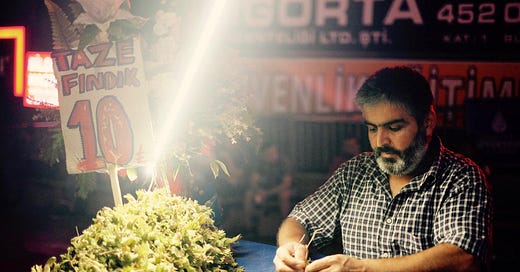




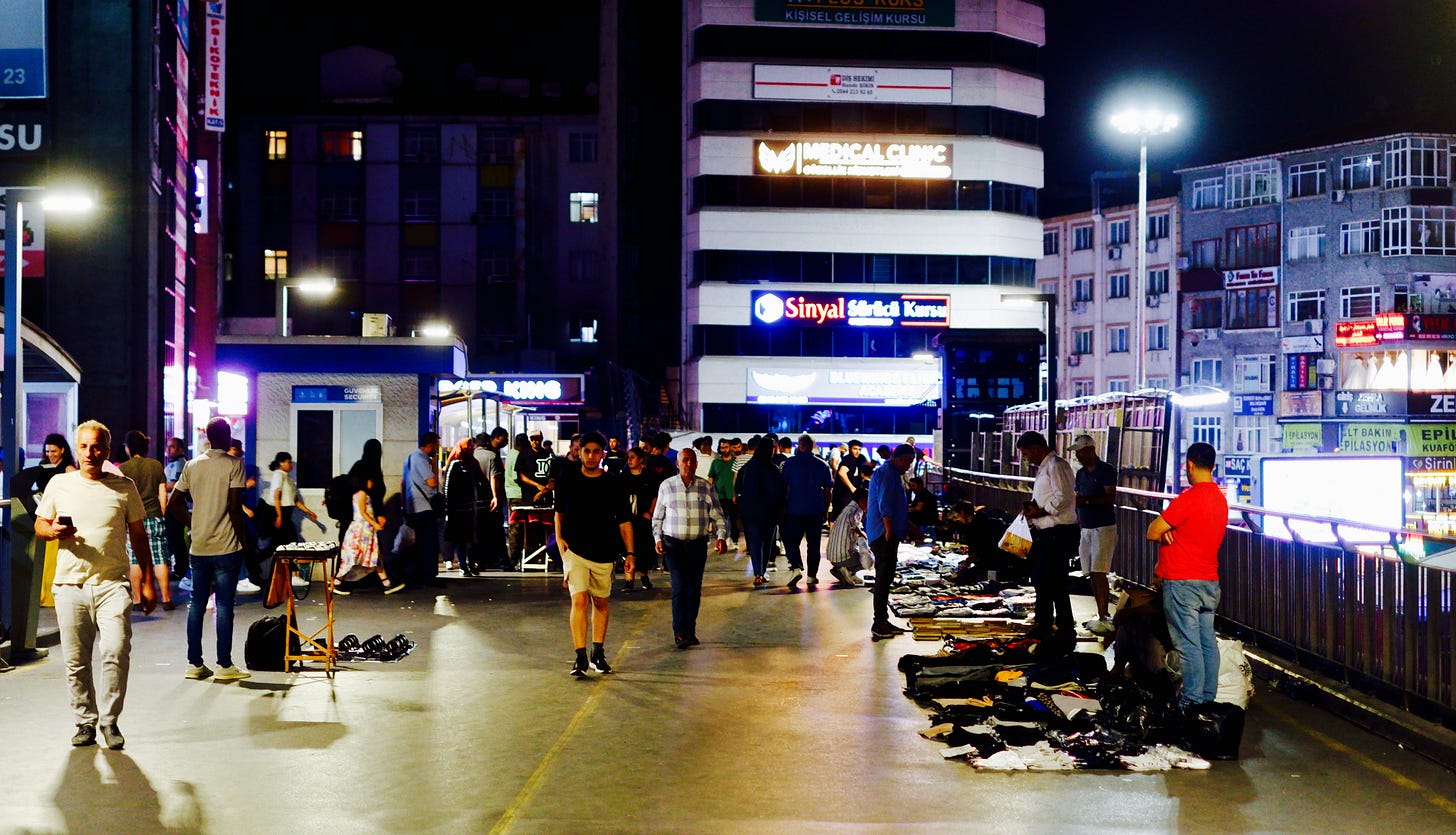
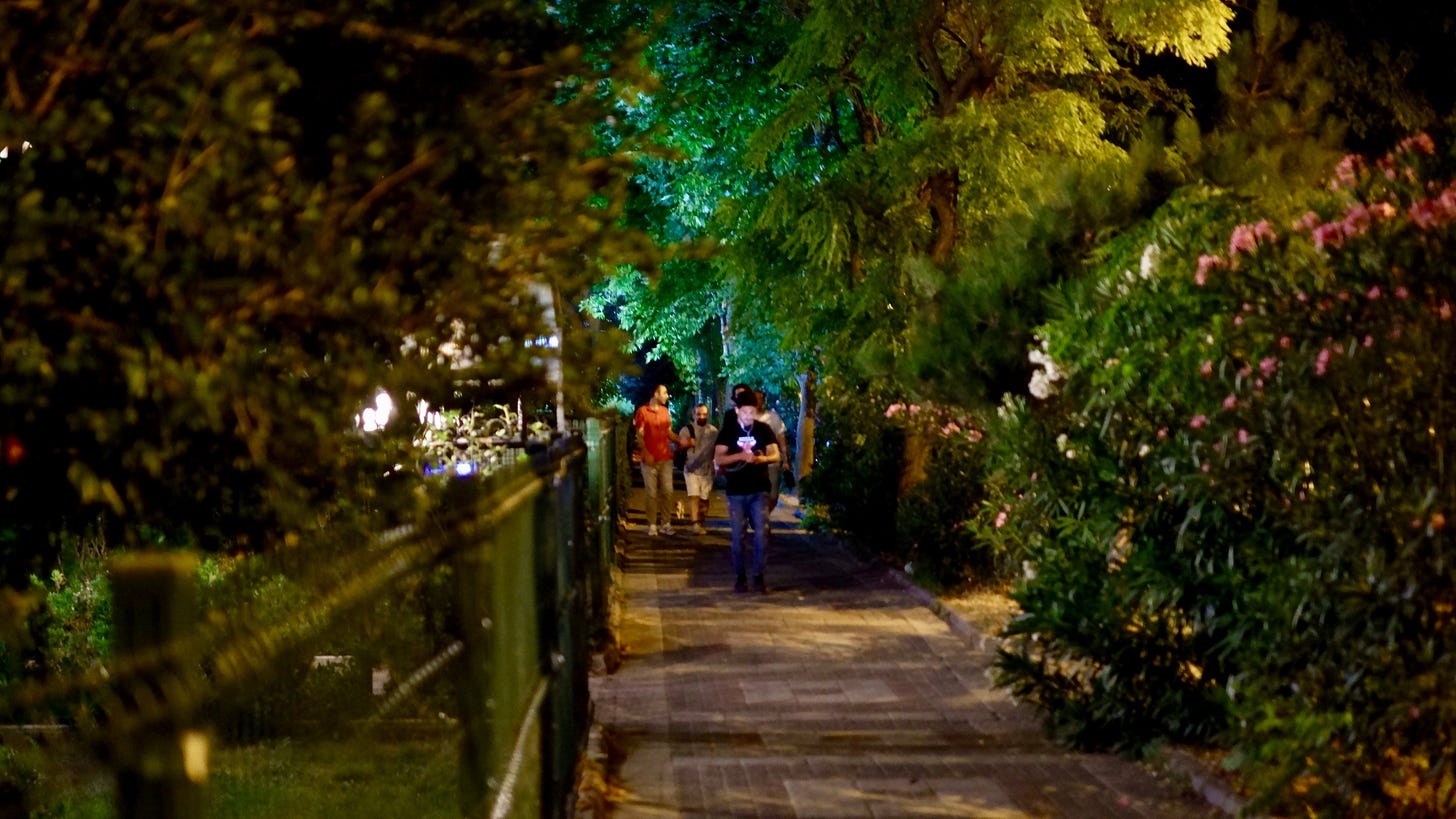

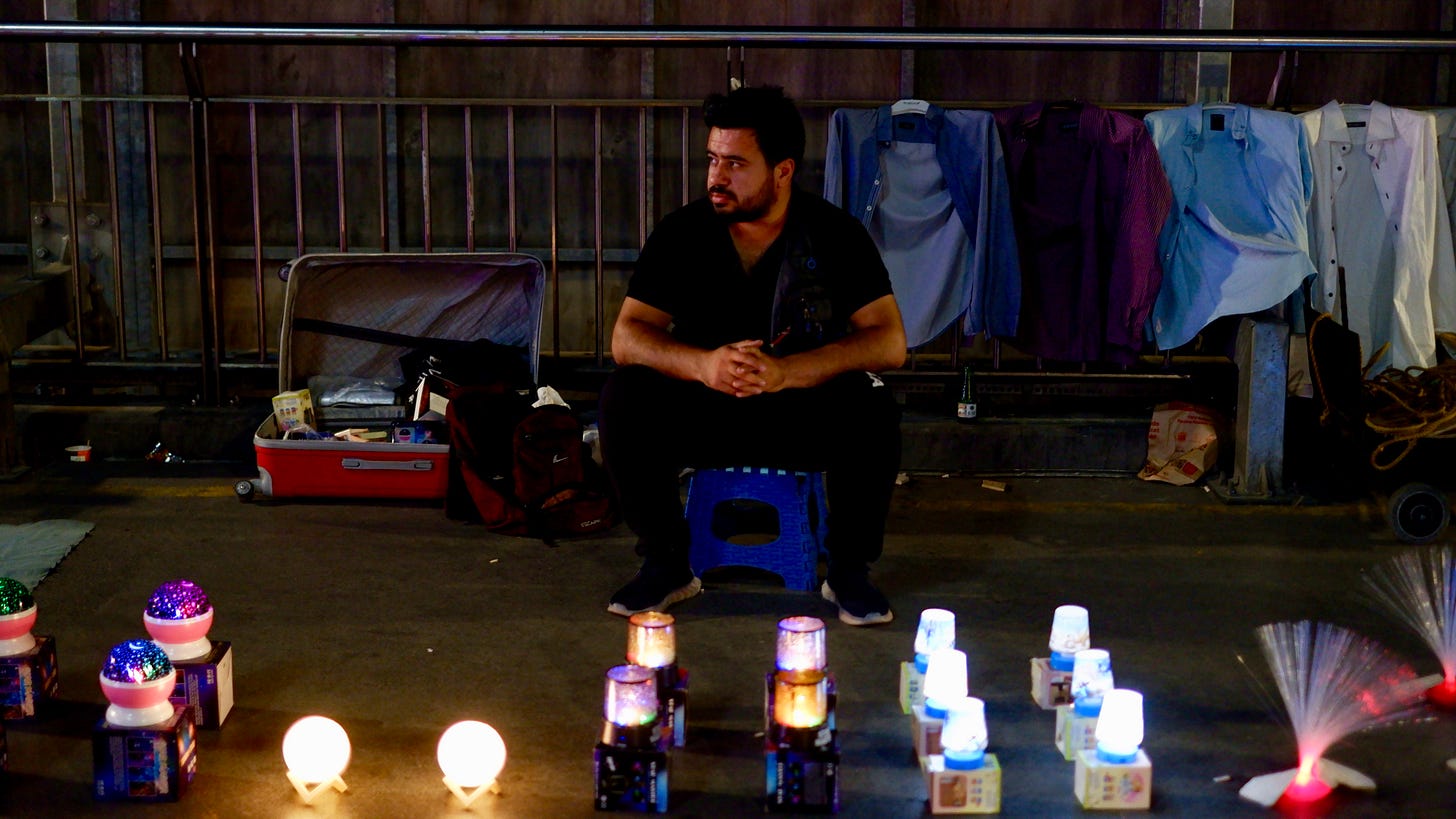
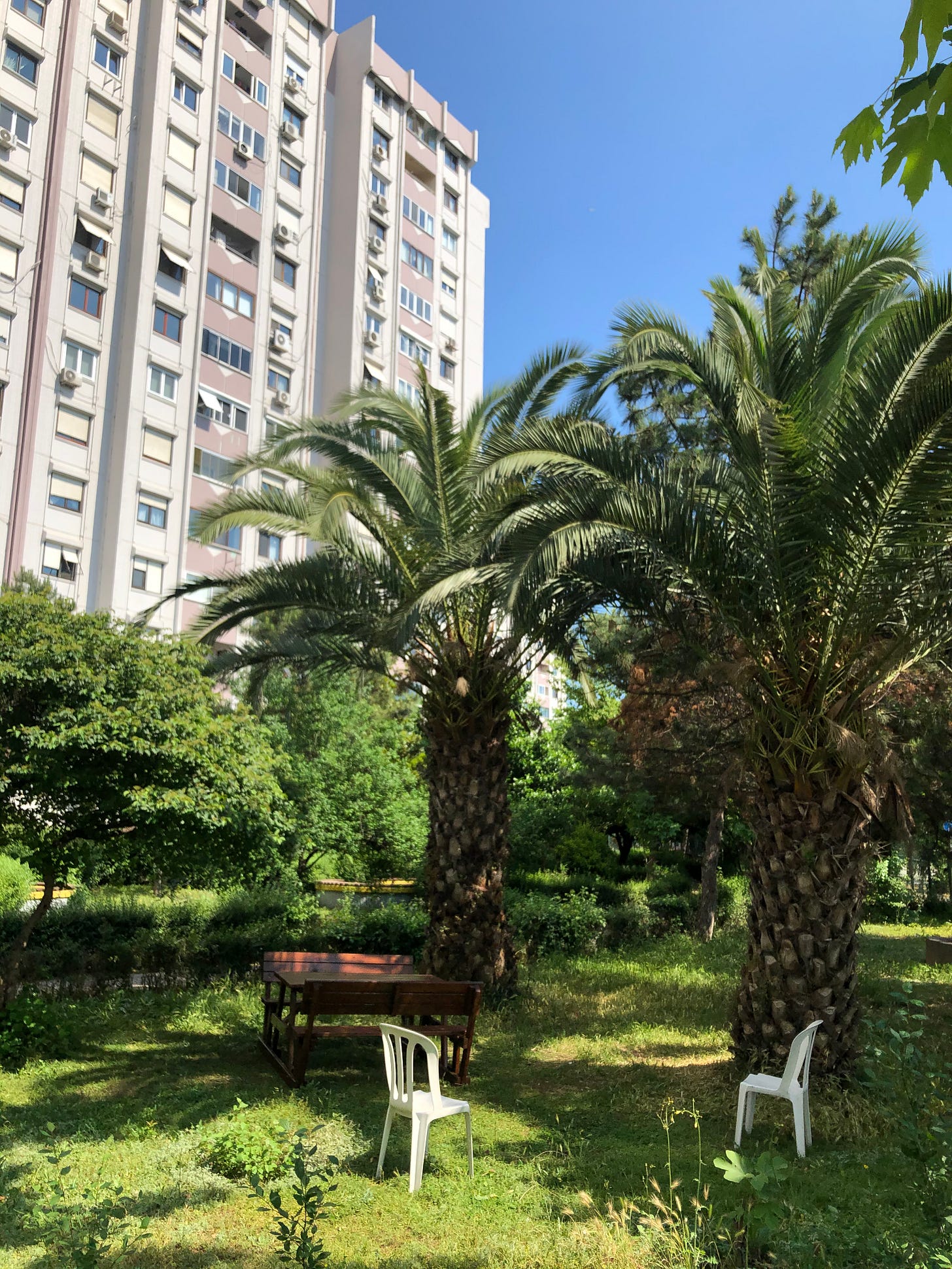
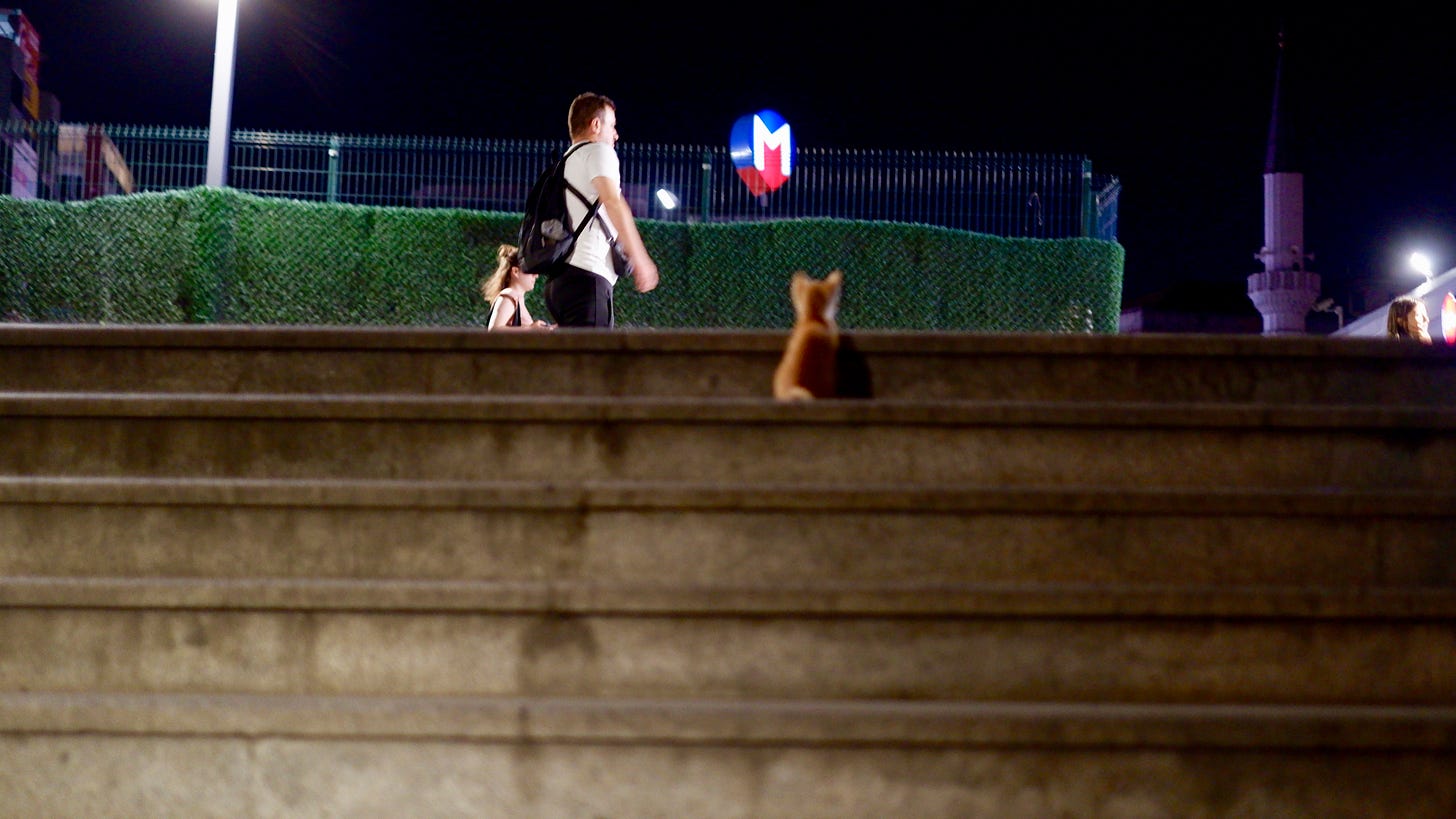
I thoroughly enjoyed this article. I truly felt like I was accompanying the author enjoying the experience of two totally different neighborhoods divided by a bridge. But what a shame that the late night bazaars of Sirinevler have been shut down for the most part.